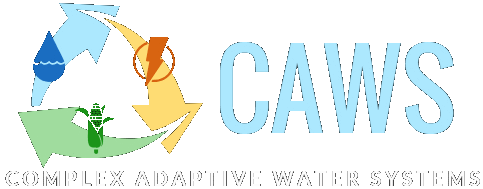
Complex Adaptive Water Systems (CAWS)

We are a team of scientists—and scientists in training—who apply a range of quantitative methods to address complex water management challenges worldwide. Based in the Department of Civil and Environmental Engineering and the Center for Catastrophe Modeling and Resilience at Lehigh University, our research has significantly advanced the understanding of water resources systems analysis, catastrophe modeling, and human behavior modeling. We explore the dynamic interconnections among food, energy, water, and the environment across various spatial and temporal scales. Since 2020, we have expanded our work to include extreme water events management, such as flood and drought modeling. Our approach integrates agent-based modeling with process-based models to assess uncertainties in both natural systems and human behavior within coupled human–natural systems.
OUR LATEST RESEARCH

Flood risk today is shaped by both natural factors, like how rain turns into streamflow, and human choices, such as how we protect property. To fully understand this risk, we must study specific areas, recognize local differences, and consider the long-term effects of floods on society. This project, supported by the U.S. NSF and Japan’s JST, brings together scientists to build a new computer model. This model includes local environmental conditions, people's flood experiences, and policies like insurance and buyouts. It also focuses on how floods affect vulnerable groups, including low-income, minority, disabled, and elderly populations.

Human activities often harm water quality. One key tool to address this is the Total Maximum Daily Load (TMDL), which sets pollution limits for rivers and lakes. Best management practices (BMPs), like buffer strips or better fertilizer use, help meet these limits. Implementing BMPs requires collaboration, data sharing, and stakeholder involvement. This NSF-funded project aims to improve water quality management across different regions. Guided by three theories on human–environment interaction, we use modeling, data analysis, and surveys to understand how farmers decide to adopt BMPs at various spatial scales.
